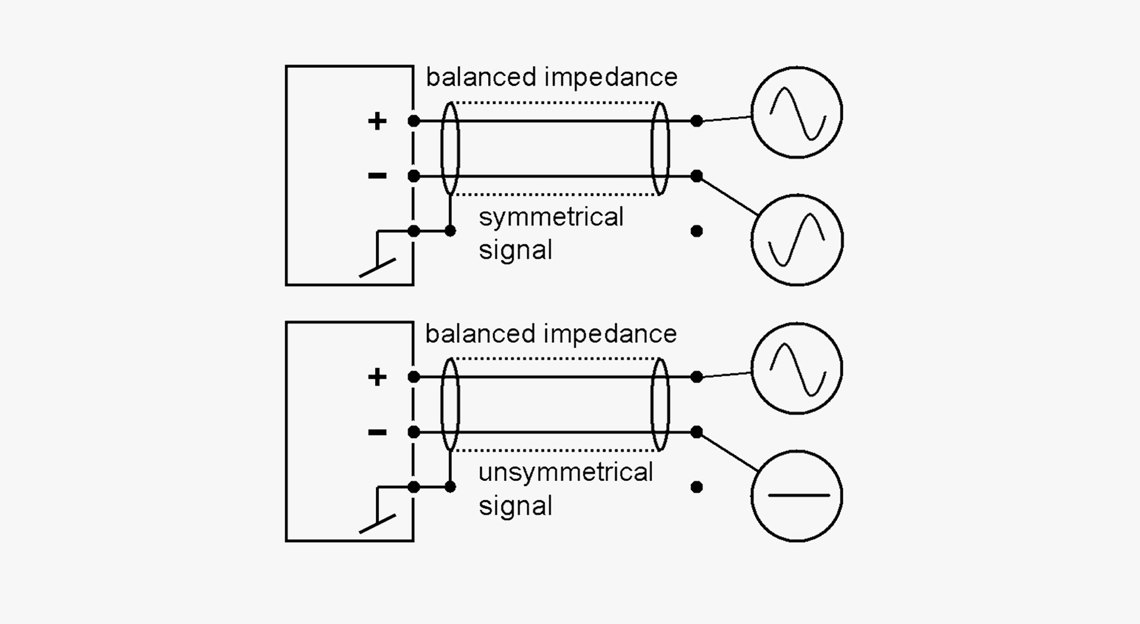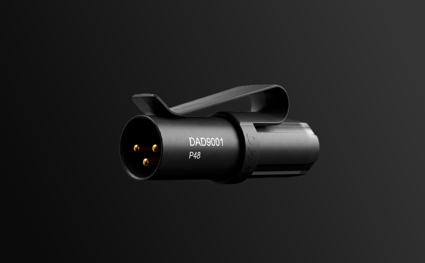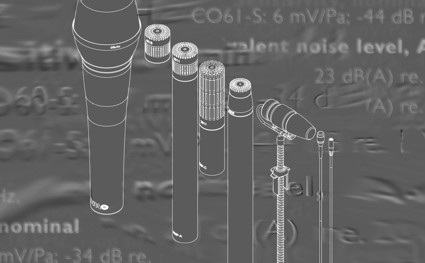Impedance balancing with active drive vs. Transformer coupled output
This article provides knowledge about the design principles of output stages for condenser microphones. Especially the advantages and disadvantages of transformer balancing and “Active drive”.

At DPA Microphones we strive for the uncompromised sonic signature. We care about audio quality and signal integrity. How the balancing circuits will affect the signal is truly of crucial importance. A transformer coupled output stage will compromise audio transparency. Transformers are audible by a more blurred response.
Taking the still increasing demand for high rejection of radio interference into account we decided to reach for a new design approach and have ended up with what we call impedance balancing with active drive.
Microphone output stage designs
In the pro audio environment it is obligatory that the interconnection is run balanced to reject incoming unwanted noise, hum and radio frequency interferences. The total signal path should be balanced in order to work as wanted – output stage, cables and input stage. The balanced signal pair runs with two conductors with opposite polarity and with same impedance to ground. The balancing can be designed with symmetrical signaling as well, so that the two lines or legs also hold the signal, but it is not necessary for a successfully balanced line.
The receiving device holds a differential amp which subtracts the two conductors and will reject the induced noise from the signal. How well this symmetrical damping is done can be expressed by the Common Mode Rejection Ratio (CMRR) and is measured in dB.
Read more about balanced and unbalanced lines and about electromagnetic interference.
Natively, a traditional microphone capsule output is single-ended, meaning that only a signal pin and a ground reference exists. In a microphone design this means that the output stage has to be adapted to a balanced drive with in-phase and out-of-phase signals plus shield reference – a differential-mode signal. Or the balancing can be secured by impedance balancing of the two lines.
To sum up, balancing can be done in various ways:
Signal balancing, designed either with
- Electronic balancing
- Transformer balancing
- Impedance balancing
Advantages using transformers
Quality transformer coupled output stages have higher CMRR than electronic balanced circuits. Typically, values around 80 dB are possible to achieve.
For longer cable runs, transformer stages with a turn ratio less than 1 are the best choice to preserve signal strength by delivering a higher current.
Drawbacks using transformers
Any transformer will introduce a loss in both coil and core. Whenever the field polarization shifts via magnetizing the core from positive to negative charge or vice versa the signal suffers from energy loss due to magnetic reluctance. Transformers are meant to operate at a certain frequency or a certain tone pattern, e.g. transformers for power supplies with high core efficiency. Transformers are at their best at steady sinus signals, not audio/music content with complex tone and impulse patterns, which will be dynamically compressed.
If the transformer should be able to handle a large frequency bandwidth and high input load, then a core is required. Therefore good audio transformers are difficult to make and huge compared to the microphone enclosure. The real challenge with transformers in microphones is that for acoustical reasons a good and neutral microphone should be as tiny as possible in order to create as little disturbance to the sound field as possible.
DPA's Impedance Balancing with Active Drive
If you chose an electronic signal balance principle, the creation of the differential-mode signal results in more components in the critical signal paths and approximately 3 dB lower signal-to-noise ratio. That’s why most DPA microphones have been designed with impedance balanced output stages. Another advantage of not having signal in a balanced coupling is that the amplitude of the signal will remain constant, independent of the input connection being balanced or unbalanced, with or without an input transformer.
The new impedance balancing with active drive technology design in the modular d:dicate Recording Microphones series preamps improves the symmetrical damping, and lowers the distortion. The phase response is linear without a transformer beyond 50 kHz with a phase deviation less than 5 degrees.
With this new know-how a common mode rejection ratio at minimum 60 dB is possible and we consider this a more than reasonable value. 60 dB noise rejection means that less than one thousandth of the noise energy will pass through the microphone electronics. In our opinion, the price paid for an even higher rejection is not worth paying, since it will incorporate audible transformers with severe audio quality degradation.


